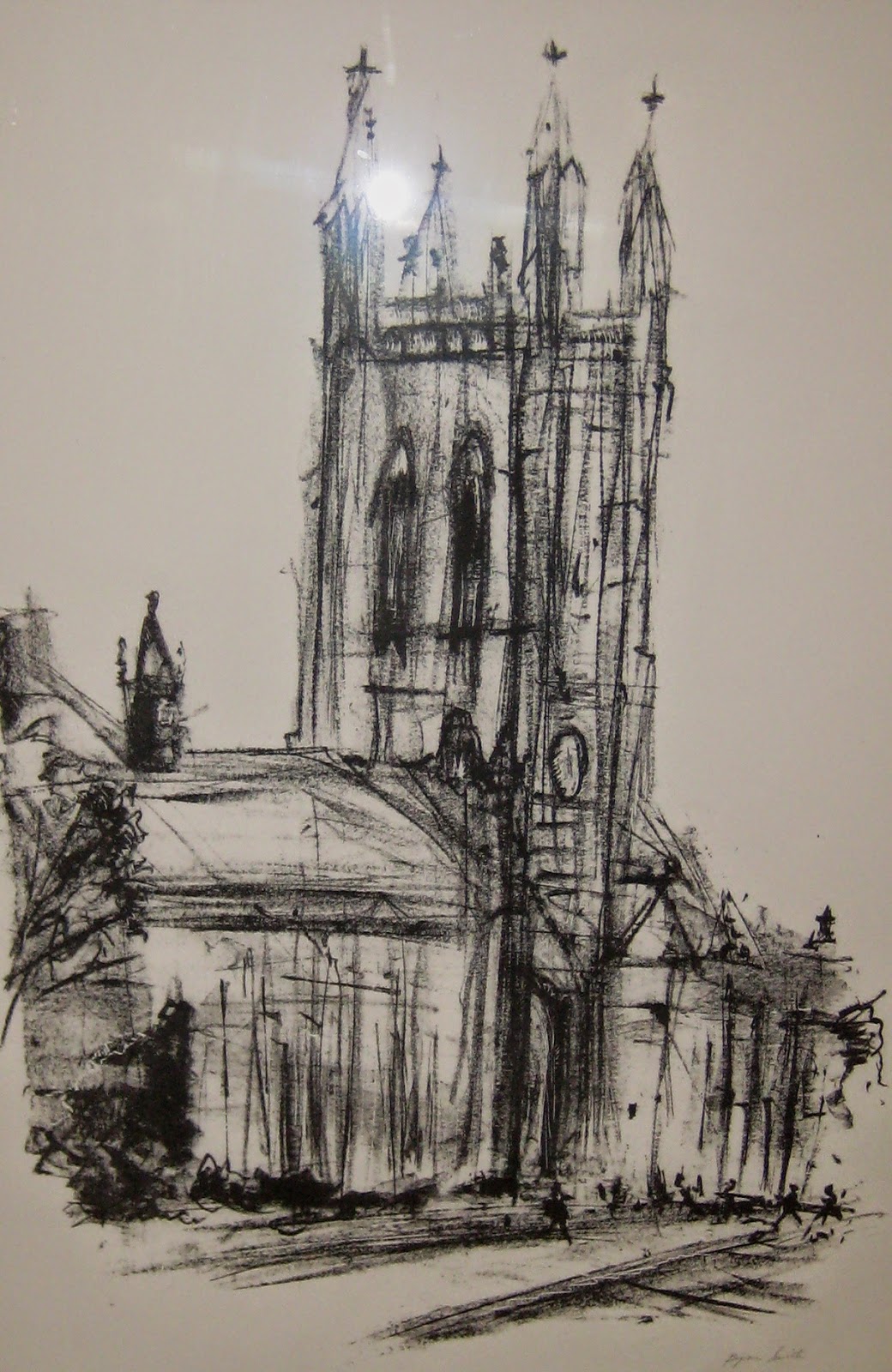New Art Exhibition at MU Student Center
 |
"Mise-en-scène: Artistic Interpretations of Campus Scenes"
February 9, 2015 to March 10, 2015
First Floor, MU Student Center
|
A new exhibition on display at the MU Student Center examines the ways in which three different artists interpret three different scenes of our campus in three different artistic media. Mise-en-scène, the title of the exhibition, refers to the arrangement of actors and scenery on a stage for a theatrical production. Mizzou's campus is the setting of life for our students, a life that can be banal or dramatic or comedic depending on the day. These art works draw attention to the diversity of settings in which campus life plays out.
 |
| Byron Smith (American, b. 1960), "Saturday Afternoon - Memorial Union", c. 1980-82, Lithograph, 2014.060, Unions Purchase |
An Artist's Vision of a Familiar Landmark
Quick, energetic
strokes form an image of a bustling campus hub, providing a glimpse of the life
swirling around the campus grande dame.
The animated lines indicate the freedom
with which the artist’s hand meets the paper.
Miniature figures, dominated by the Gothic tower, rush across the
foreground, traversing Hitt Street, a path which has guided generations of
students through their college years. The
artist takes advantage of the rough, scratchy drawing technique used in
lithography to accentuate the contrasting planes of the building, highlighting
the texture of the stone decorations and deeply recessed hollows of the tower’s
windows.
A
Columbia native, Byron Smith grew up in a cityscape dominated by the spires of
Memorial Union. Displaying the versatility of an artist, he is both a painter
and a printmaker. His typical subject matter is the landscape of central
Missouri, which he paints on site. Smith says, “When I paint from nature, I
express myself by depicting the landscape elements I both see and feel. As a
result, every painting is different.” (Columbia
Missourian, 2013) Smith created Saturday Afternoon – Memorial Union
during his years as a student in the MU art department.
 | |
| "Weingart", Under Providence Road, c. 1990s, Dry Pastel, 2012.053, Anonymous Donation |
Do you know this artist?
The unknown
artist, "Weingart", has captured a view of the natural beauty hidden beneath a busy street,
contrasting the man-made with the organic. The scene depicts the creek alongside
the pedestrian underpass that is part of the MKT Trail, a popular site for MU
students seeking to exercise in a natural setting. The heavy lines of the
concrete underpass frame the deep, shadowed underworld of the creek. The
creek water reflects the light of an early fall day.
Pastel,
a stick made of pure powdered pigment and a binding agent, is typically applied
to the surface by hand. It is an unforgiving medium that does not allow an
artist to correct mistakes. In this work, the pastel medium allows the artist
to endow concrete and stone with soft and velvety edges. The medium is also
ideal for achieving the brilliant color of fallen leaves and still-green grass.
This
pastel was donated to the Student Unions sometime during the 1990’s, possibly
by a student. The artist has signed it using only their last name, so
information about the work and the artist is limited.
 | ||||
| Keith Crown (American, 1918-2010), Missouri University Dairy Farm, c. 1989, Watercolor with airbrush, 2011.028, Unions Purchase |
Hidden Landscapes
In this watercolor, Keith Crown depicts views of the
University of Missouri’s dairy farm in northwest Columbia. The upper-half of
the painting portrays farm buildings atop a grassy hill, while inverted trees
and power lines fill the lower-half of the composition. The two perspectives
are divided by the slightly curving white line that runs across the center of
the picture plane, which represents a road. The painting is interspersed with
patches of translucent and saturated color, created by varying the amount of
water mixed with pigment. Crown created the most saturated areas of color using
a dry brush technique in which the pigment is not diluted. The vivid colors he
chose for the landscape and the airiness he was able to achieve through the use
of watercolor communicate feelings of warmth and tranquility that transport the
viewer to the sunny countryside.
The Foremost Dairy Research Center is not a part of campus that most people see on a regular basis, but it is the center of innovation and exploration of dairy science. Mizzou professors and students began the study of dairy science in the 1880s and a chair of dairy husbandry was established in January, 1901. For more information on CAFNR's dairy center, please visit http://foremostdairy.cafnr.org/about/
Blog post authored by Sarah S. Jones, Ph.D. Candidate in Art History, University of Missouri.
Comments
Post a Comment